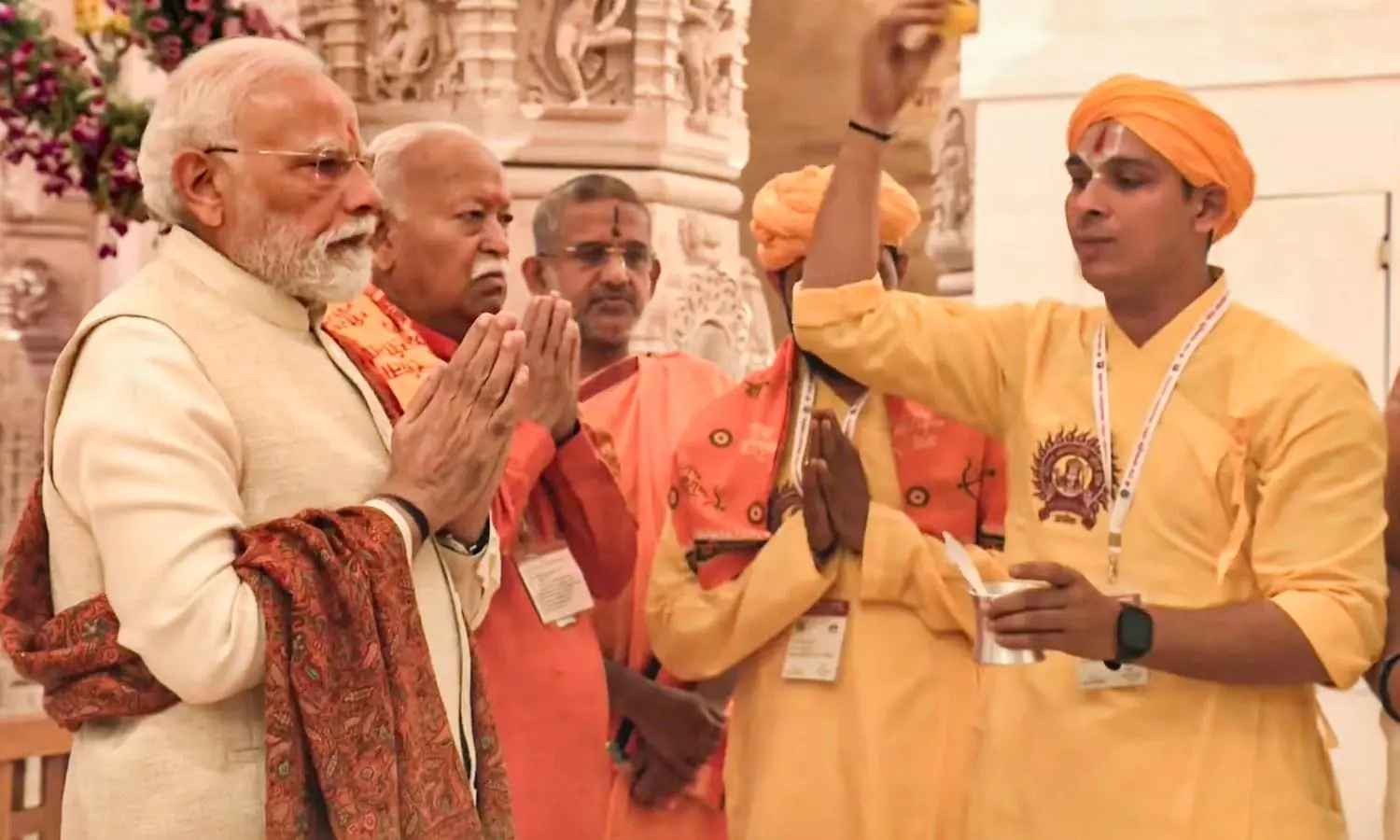
What is Dhwajarohan ceremony at Ram Temple in Ayodhya?
PM Modi hoists a saffron flag bearing the image of a Sun, an 'Om', and a Kovidara tree atop the temple 'shikhar', marking the formal completion of its construction

Ayodhya resonated with devotional fervour on Tuesday (November 25) as thousands of devotees poured into the temple town to witness Prime Minister Narendra Modi ceremonially hoist a saffron flag atop the Ram Temple, marking the formal completion of its construction.
What is Dhwajarohan ceremony?
From the crack of dawn, chants of "Jai Shri Ram" echoed across the city as visiting seers and pilgrims described the hoisting of the temple flag — the sacred ritual known as "Dhwajarohan" — as a moment of historic fulfilment.
Also Read: PM Modi hoists saffron flag at Ayodhya Ram Janmbhoomi temple
The Pran Pratishtha, held on January 22, 2024, consecrated the Ram Lalla idol in the garbhagriha (sanctum sanctorum). Dhwajarohan, on the other hand, signifies the architectural completion of the temple and serves as a public proclamation of its sovereignty.
The former focused on the installation of the idol. Dhwajarohan opens all 44 doors of the temple for all rituals. Some priests have called it the "second pran pratishtha" as it signifies is the activation of the full temple structure.
Saffron flag atop temple 'shikhar'
Prime Minister Modi hoisted a right-angled triangular saffron flag, 10 feet high and 20 feet long, bearing the image of a radiant Sun symbolising Lord Ram's valour, an 'Om', and the Kovidara tree atop a 'shikhar' built in the traditional Nagara architectural style.
During his visit, the prime minister will also offer prayers at the Ram Darbar Garbh Grah and the Ram Lalla Garbh Grah, and visit the Saptmandir, Sheshavatar Mandir and the Mata Annapurna temple inside the Ram Janmabhoomi complex.
The temple complex features 87 carved stone episodes from the Valmiki Ramayana on the outer walls of the shrine and 79 bronze-cast depictions from Indian culture along the enclosure walls.
Why Dhwajarohan date matters
The ceremony is taking place on the auspicious Panchami of the Shukla Paksha in the month of Margashirsha, coinciding with the Abhijit Muhurat of Shri Ram and Mata Sita's Vivah Panchami, a day signifying divine union, the prime minister's office said in a statement on Monday (November 24).
Also Read: Ayodhya flag hoisting ceremony signals launch of BJP's 'Mission UP 2027'?
The date also marks the martyrdom day of Guru Tegh Bahadur, who meditated in Ayodhya for 48 hours in the 17th century, it said.
The flag was hoisted by PM Modi in the presence of RSS chief Mohan Bhagwat on the temple spire during the auspicious period between 11.58 am and 1 pm, following which Modi is expected to address the people.
Tribals, Babri Masjid litigant’s son among invitees
Representatives of tribal and forest-dwelling communities from Sonbhadra, invited as special guests for the flag-hoisting ceremony at the Ram temple, joined the invitees, in Ayodhya on Tuesday.
Also Read: Ayodhya Deepotsav sets two new world records
Among the invitees was Iqbal Ansari, whose father, Hashim Ansari was one of the original litigants in the Babri mosque case. “I am delighted to attend the programme,” Ansari told reporters.
Invited by the Shri Ram Mandir Trust, the visitors were given a grand welcome by the members of the Vishva Hindu Parishad (VHP) and the Rashtriya Swayamsevak Sangh (RSS), officials said.
Meanwhile, the city remained under a heavy security blanket, with extensive checking of incoming vehicles and questioning of passengers at all entry points.
(With agency inputs)

